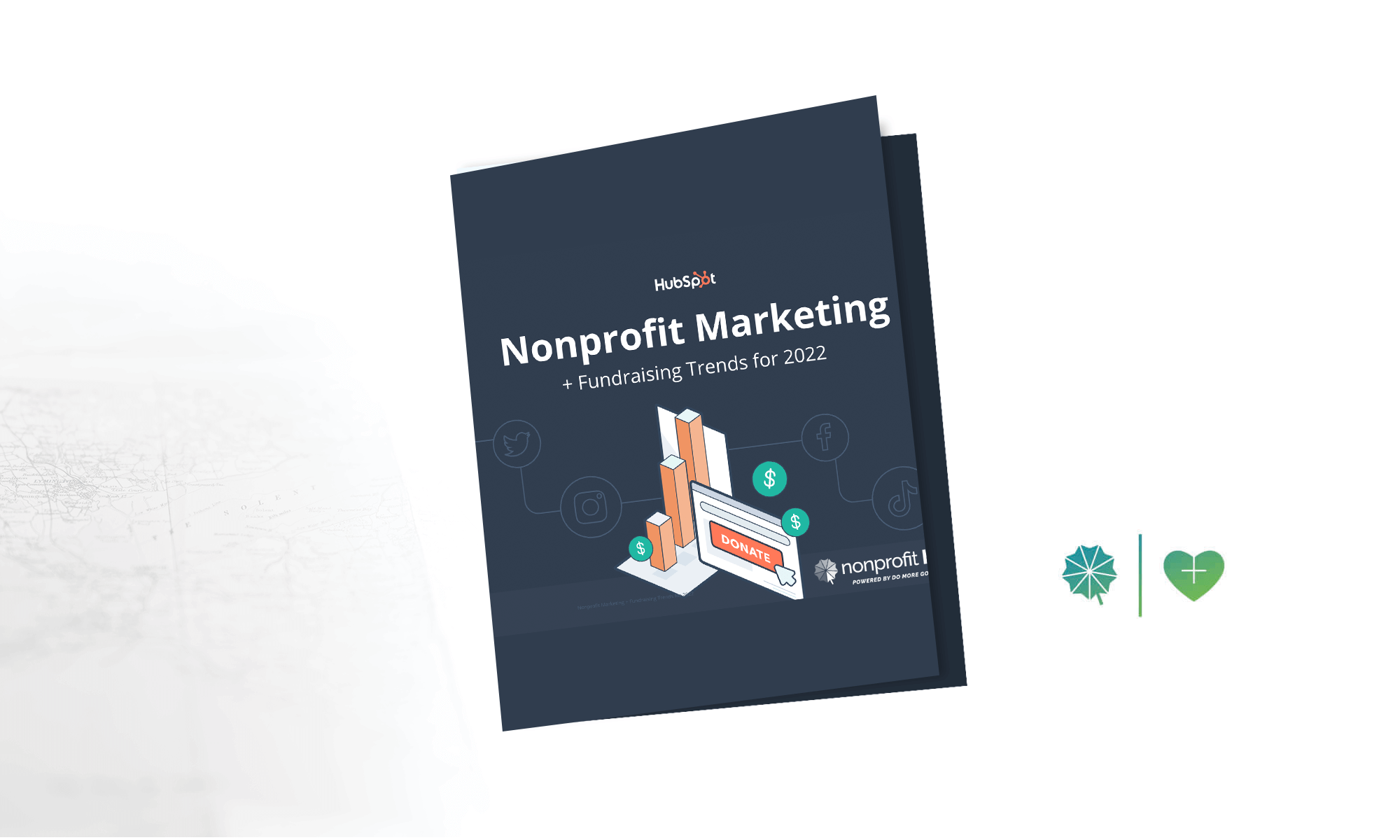
Cause Inspired TechSoup Partnership
May 21, 2022
Nonprofit Marketing & Fundraising Trends 2022 Guide
May 24, 2022How Digital Technology is Transforming Nonprofit Fundraising
Using Fundraising Technology in 2022
Most of us can remember the days when fundraising meant receiving a physical letter in the mail from an unfamiliar nonprofit organization. The letter may urge the recipient to contribute to their cause. However, times have changed! The latest digital fundraising technology offers an impressive array of tools that empower nonprofits to raise funds, promote their cause, manage donors, engage communities, and collaborate online.
Tight budgets are par for the course for many nonprofit organizations. 91% of which are small in terms of budgets and employees. This makes it a serious challenge to come up with resources to implement fundraising and advertising campaigns that have a measurable impact. With virtual software at their fingertips, nonprofits can use online fundraising platforms to increase revenue or communicate with donors on social media. Using these tools, you can narrow the gap between big and small organizations. However, the nonprofit sector can be slower than others to adopt technological resources. In a digital era, hesitation in evolving hurts engagement.
The good news is that the COVID-19 pandemic was instrumental in transforming how people across all sectors work and communicate. It pushed nonprofits to broaden their technological horizons to stay afloat during difficult times. Now that the future is here, there are many reasons to celebrate since online solutions make the future of philanthropic work a lot brighter.
Online Fundraising Events
While oldies-but-goodies like in-person bake sales and charity galas are still at the forefront of most successful fundraising strategies. However, online tools revolutionized the process of raising cash. The hassle of booking venues, filling out complicated paper forms, and managing time limits on how long a fundraiser can last were just a few constraints that digital tech has made obsolete.
Many exciting virtual fundraising ideas take their inspiration and format from traditional fundraising events. There’s no reason why buzzy activities like raffles, auctions, and a-thons can’t take place exclusively online! The best part about holding fundraising events online is the boost in donor engagement. Your event is no longer limited to the people who are just in your community. You now have the option to open your event to supporters across the world.
Fundraising Ideas For Your Next Event
- Auctions. Charitable auctions have been around since time immemorial for a good reason. They foster a thrilling atmosphere of friendly competition while raising impressive revenue. Online fundraising auctions allow people worldwide to register, bid on items, and track bids from their homes. Unlike regular auctions, which typically occur in a single evening, virtual auctions can last a week, a month, or more. This creates a uniquely engaging experience for your donors.
- Raffles. What’s the best thing about fundraising raffles? Everyone who buys a ticket is automatically a donor. Online raffles have all the high energy of the in-person version as participants wait excitedly to see what they have won.
- A-thons. Hosting a virtual walk-a-thon, read-a-thon, or dance-a-thon is a fun alternative to traditional in-person a-thons. They are not limited to a particular location. For example, the HERS Breast Cancer Foundation gives participants worldwide one week to complete a run/walk course of their own choosing. This method encourages them to post their progress to social media accounts with the #HERSWalkRun hashtag, building a virtual community of supporters.
- Live streaming. Whether you opt for online auctions, raffles, a-thons, or sweepstakes, live streaming allows you to bring your supporters together. You can use live events for drawings, updates, winner announcements, and more. Donors and participants can tune in from their homes, creating an atmosphere of camaraderie and boosting engagement.
- Hybrid Solutions. When an in-person fundraising event beckons, you can still save trees, costs, and time by eliminating unnecessary paperwork. For instance, mobile bidding tools enable auction participants to place and track bids from their mobile devices wherever they are. Similarly, online registration and ticket sales make printing, handing out, and collecting physical forms and tickets a thing of the past. You can live stream, too! Live streaming allows all the supporters who couldn’t make the event to participate from their living rooms!
Crowdfunding
Suppose one of your friends has ever asked you to donate to a charity they support instead of giving them a gift on their birthday. In that case, you’re already familiar with the basic concept of crowdfunding and peer-to-peer fundraising.
The popularity of crowdfunding is growing thanks to online fundraising platforms like GoFundMe, RallyUp, and Indiegogo. One of the most impressive online crowdfunding successes in the United States was when participants raised a whopping $41.6 million to help the victims of Hurricane Harvey in 2018.
Thanks to the interactive, shareable, and re-tweetable nature of crowdfunding campaigns, they can go where traditional fundraising methods can’t, reaching a diverse and global audience, raising awareness, and inspiring millions to contribute to your cause.
Peer-to-Peer Fundraising
Like crowdfunding, peer-to-peer fundraising is quickly becoming one of the most popular methods for boosting nonprofit revenue and attracting donors, raising 30% more revenue in 2021 than in 2020. Peer-to-peer fundraising empowers online supporters to connect with your nonprofit and contribute to your funding goal by crafting personal campaign pages to raise cash on your behalf. Yes, they do the work for you! Peer-to-peer fundraising capitalizes on networks that already exist among communities. By taking advantage of social media, they reach new donors across cultural, national, linguistic boundaries, and timezones.
Crucially, a digital-forward approach leverages social media, which can attract younger donors. Digital marketing can reach a tech-savvy demographic who spend a lot of time online. Sometimes, organizations in the nonprofit sector can find these demographics hard to reach. Moreover, studies have found that younger donors and people of color are big on crowdfunding. Studies indicate that donors aged 24-35 are the most likely age group to participate in crowdfunding campaigns. Deeply concerned about systemic injustice, the environment, and racial and gender inequality, the members of Gen Z are quick to take up arms in support of causes.
Donation Pages
While nearly all nonprofits accept donations on their website, a mere 6% use online fundraising platforms to create customized donation pages. This hesitation makes little sense in a digital era for the following reasons:
- Donation pages are shareable. Unlike organization websites, donation page designs are incredibly shareable across all social media channels. Online pages can boost engagement and reach by being shared.
- Donation pages collect and track information. They also gather and track donor data, which helps nonprofits measure, analyze, and understand the giving behavior of their supporters, which are essential metrics for a robust donor retention strategy.
- Donation pages look and feel sleek, modern, and effortless to navigate. Finally, nonprofit websites can be slow to load or simply look outdated. A fully branded donation page is guaranteed to be memorable and easy to use. They encourage donors to donate more and even set up recurring donations.
When Generosity Meets Technology
Despite the benefits of digital-first fundraising initiatives, sectors like education and healthcare trail behind online fundraising trends, and just 33% of nonprofits worldwide are making the most of methods like peer-to-peer fundraising. Don’t let this outdated attitude define the future of your organization!
When leveraging technological innovation brings more support and more revenue, do not hesitate to make changes and updates in technology. Nonprofits that want to see growth should prioritize implementing an effective digital-first fundraising strategy. Digital technology is power; use it for good. After all, some of the best online fundraising platforms won’t ask you for a penny. It pays—literally—to keep up with the times and the tech in today’s digital landscape.
The post How Digital Technology is Transforming Nonprofit Fundraising appeared first on Nonprofit Hub.
